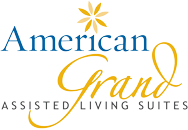According to the U.S. Census Bureau, as of 2019, there were approximately 54.1 million residents aged 65 and older. This is set to increase as the population ages. With many aging adults needing senior care, it’s important to understand terms like Activities of Daily Living (ADLs). This article discusses ADLs and why they’re important for the aging population.
What Are Activities of Daily Living (ADLs)?
Activities of Daily Living (ADLs) are essential skills that individuals use to take care of themselves. These basics include eating, grooming, and mobility. In the U.S., more than 20.7% of adults aged 85 and older require help with ADLs. This is also true for 7% of individuals between the ages of 75 and 84, and 3.4% of adults aged 65 to 74. While there are many definitions of ADLs, most agree that basic ADLs include five categories:
- Mobility
- Dressing
- Maintaining continence
- Personal Hygiene
- Eating
So, why do ADLs matter? This is an essential measurement since it indicates an individual’s functional status. Their dependence and level of care required can be calculated, and arrangements can be made. In fact, ADLs can help decide whether an individual is more suitable for hospitalization, at-home care, assisted living, or a nursing home. The metric is also essential for understanding services and programs. The assessments are often required by non-Medicaid programs are fulfill a specific criterion.
Additionally, long-term care insurance companies and Social Security Disability Insurance (SSDI) both consider ADLs while making their decisions about pay-outs and qualifications.
Basic Activities of Daily Living vs. Instrumental Activities of Daily Living
ADLs can be divided into two main categories: basic Activities of Daily Living (BADLs) and Instrumental Activities of Daily Living (IADLs). Both are essential for functioning but have some differences which need to be thoroughly understood. We have discussed them in detail below.
Basic Activities of Daily Living (BADLs)
BADLs, also known as physical ADLs, refer to taking care of basic needs. These include continence, toileting, grooming, personal hygiene, eating, dressing, and ambulating. BADLs are required for independent living and are used daily.
Instrumental Activities of Daily Living (IADLs)
IADLs are more complex than BADLs. Instead of being physical necessities, they’re more related to functioning in society independently. They include housekeeping, taking medication, managing finances, housekeeping, shopping, communication skills, preparing food, transportation, and doing laundry.
It’s important to note that IADLs are lost earlier than BADLs. They’re not as noticeable as loss of BADLs since they’re required daily. However, they’re an important measurement since they determine whether or not an individual requires assistance.
American Grand Offers Help Without Stripping Away Your Independence
When we grow older, it’s normal to need help with ADLs. Fortunately, assisted living homes are an excellent way to receive help while still maintaining your independence. Whether you need a little help or more extensive assistance, our experienced staff can aid you. Tour American Grand and find out more about our state-of-the-art facilities by calling us at (920) 585-6985 or contacting us here.



